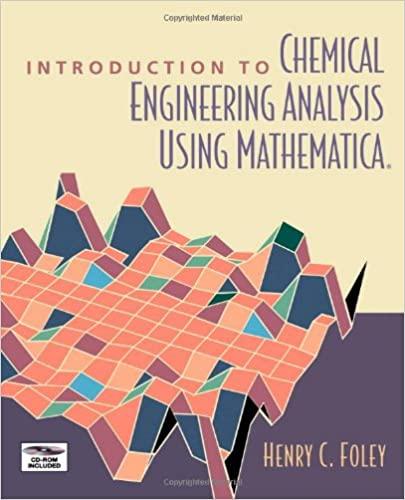Question
Prof. Modyn proposes a multi-step, steady-state approach to cooling low-pressure steam before it's exhausted to the ambient. The steam enters a compressor at 1.50k(g)/(s),0.100MPa ,
Prof. Modyn proposes a multi-step, steady-state approach to cooling low-pressure steam before it's exhausted to the ambient.\ The steam enters a compressor at
1.50k(g)/(s),0.100MPa, and
285\\\\deg Cwhere it is adiabatically compressed to
1.20MParequiring\
2250kW. The water is then feed to a well-insulated counter-current heat exchanger where it is isobarically cooled with air\ flowing at
1.14kmo(l)/(s). The air enters the exchanger at
25.0\\\\deg Cand leaves at
185\\\\deg C. Lastly, the water is fed to a well-insulated\ throttle valve where it is reduced back to
0.100MPaforming a 2-phase product. Neglect changes in kinetic and potential\ energy.\ Assume air is an ideal gas with
hat(C)p[k(J)/(k)mol*K]=27.9+4.78\\\\times 10^(-3)Twith
Tin
K.

Step by Step Solution
There are 3 Steps involved in it
Step: 1

Get Instant Access to Expert-Tailored Solutions
See step-by-step solutions with expert insights and AI powered tools for academic success
Step: 2

Step: 3

Ace Your Homework with AI
Get the answers you need in no time with our AI-driven, step-by-step assistance
Get Started


